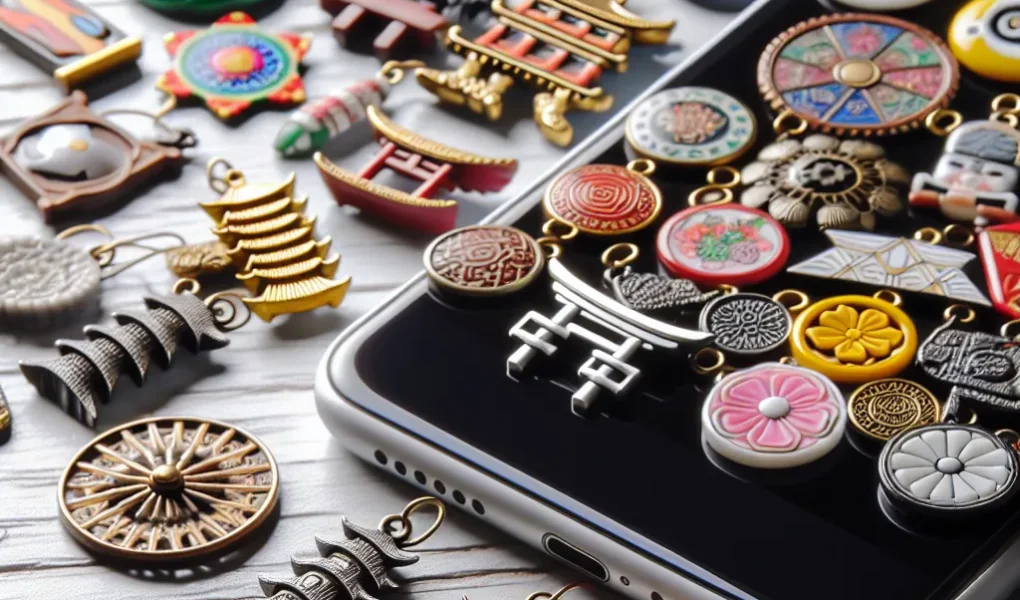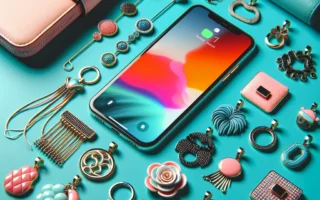The History and Evolution of Phone Charms
Phone charms have a rich history that dates back to ancient civilizations, where people would attach trinkets and symbols to their belongings for cultural and spiritual purposes. In many cultures, these charms were believed to bring good luck, protection, and prosperity to the owner. The evolution of phone charms can be traced to early Japanese and Chinese traditions, where small ornaments called “omamori” and “pinyin” were used to ward off evil spirits and attract positive energy.
As mobile phones became increasingly popular in the late 20th century, the practice of adorning them with decorative charms gained widespread popularity across Asia. In Japan, the trend took off in the 1990s when mobile phone companies started producing custom charms as promotional items. This marked the beginning of the commercialization of phone charms, leading to a wide array of designs and materials being utilized to cater to diverse consumer preferences.
Over time, phone charms have transcended their original cultural and spiritual significance to become a unique form of personal expression and fashion accessory. From cute anime characters and symbols of love to miniature food items and sports memorabilia, phone charms now reflect a wide range of interests and individual tastes. While their practical use in protecting the phone from damage has diminished with advancements in phone design, the cultural and personal significance of phone charms remains deeply rooted in many societies.
In conclusion, the history and evolution of phone charms illustrate their enduring cultural significance as more than just a decorative item. Understanding their roots in ancient traditions and the ways in which they have evolved in modern times sheds light on the deep connection between material culture and personal expression.
Phone Charms: Symbols of Luck and Protection
Phone charms have long been an integral part of mobile phone culture, serving not only as decorative items but also as powerful symbols of luck and protection. In many cultures, phone charms are believed to bring good fortune and ward off negative energies, making them much more than just a trendy accessory.
Across various cultures, different symbols are revered for their auspicious connotations. For example, in Asian countries, charms featuring symbols such as the lucky cat, bamboo, or the beckoning cat are popular choices due to their association with prosperity and good luck. In contrast, in Western cultures, charms like the four-leaf clover or the horseshoe are traditionally seen as symbols of good fortune.
Moreover, phone charms often hold sentimental value as they can be gifted by friends or family members as a token of love and protection. This personal significance adds an extra layer of meaning to these small adornments, elevating them from mere trinkets to cherished talismans.
As technology continues to evolve, the tradition of adorning mobile phones with these symbolic trinkets persists, showcasing the enduring cultural significance of phone charms as symbols of luck and protection.
Phone Charms in Different Cultures: A Comparative Study
Phone charms, those tiny decorative trinkets that dangle from mobile phones, carry a significant cultural relevance in various societies around the world. While they are commonly viewed as mere decorative items in Western cultures, phone charms hold a much deeper meaning in other parts of the world. A comparative study of phone charms in different cultures reveals the diverse symbolism and purposes attached to these small adornments.
In Japan, for example, phone charms, known as “keitai straps,” are not only seen as ornaments but also as a form of personal expression and protection. It is common for individuals to attach charms with specific symbols such as animals, shapes, or characters to convey their personalities or bring good luck. In contrast, in South Korea, phone charms called “jumji” are often associated with superstitions and beliefs in warding off evil spirits or attracting good fortune.
On the other hand, in Middle Eastern cultures, such as in Egypt or Turkey, phone charms are utilized for their protective qualities and can feature symbols with religious significance, serving as a talisman against harm or misfortune. In some African cultures, phone charms are crafted with traditional materials and patterns, reflecting the rich heritage and ethnic identity of the wearer.
Overall, this comparative study emphasizes how phone charms are not simply trivial accessories but rather culturally embedded objects carrying diverse meanings and functions across different societies. Understanding the significance of phone charms in various cultures sheds light on the intricate ways in which people express their beliefs, identity, and spirituality through everyday items.
The Psychological Impact of Phone Charms on Users
Phone charms have become an increasingly popular accessory in today’s digital age, serving as more than just a decorative item. Beyond their aesthetic appeal, phone charms hold cultural significance and also have a psychological impact on users. These small trinkets are often personalized and hold sentimental value, serving as a form of self-expression and reflecting the users’ individuality.
From a psychological perspective, phone charms can provide a sense of comfort and familiarity to users. The act of customizing and choosing a charm can evoke positive emotions and nostalgia, contributing to an individual’s overall well-being. Additionally, the tactile nature of phone charms can offer a soothing sensory experience, especially in moments of stress or anxiety.
Furthermore, phone charms often hold symbolic meanings or represent collective beliefs within specific cultures. For example, in some East Asian societies, certain charms are seen as protective talismans or bear symbols of luck and prosperity. The presence of these charms can instill a sense of assurance and positivity in individuals, impacting their mental state and behavior.
Understanding the psychological impact of phone charms on users sheds light on their importance beyond being mere decorative accessories. These seemingly trivial items possess the power to influence individuals’ emotions, cultural connections, and psychological well-being, making them an integral part of modern-day personal expression and identity.
Phone Charms as Personal Expression: Beyond Trinkets
Phone charms, those small decorative trinkets that adorn mobile devices, have long been considered more than just a simple accessory. These tiny adornments hold a significant cultural and personal value, serving as a form of personal expression and individuality. Beyond being mere trinkets, phone charms allow individuals to showcase their unique preferences, beliefs, and interests. Whether it’s a favorite anime character, a symbol of good luck, or a representation of one’s cultural heritage, phone charms serve as a tangible extension of one’s identity.
In today’s digital age, where personal interactions often occur through screens, phone charms offer a nostalgic and tangible way for individuals to express themselves in the physical world. They act as an extension of one’s personality, creating a sense of connection and individuality in the increasingly homogenized world of technology. Phone charms also serve as conversation starters, allowing individuals to connect over shared interests and spark meaningful conversations in a world dominated by virtual communication.
Furthermore, the act of selecting and displaying a phone charm is a deeply personal endeavor, reflecting an individual’s emotional and cultural attachments. Whether it’s a memento from a cherished memory or a symbol of protection, the choice of a phone charm is a reflection of one’s innermost thoughts and feelings. In this way, phone charms transcend their physical form and become a powerful means of self-expression and storytelling.
In conclusion, phone charms are far more than just decorative items; they are a reflection of one’s cultural identity, personal narrative, and individuality. As society continues to embrace technological advancements, the enduring appeal of phone charms as a form of personal expression remains unwavering.


